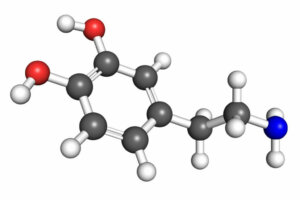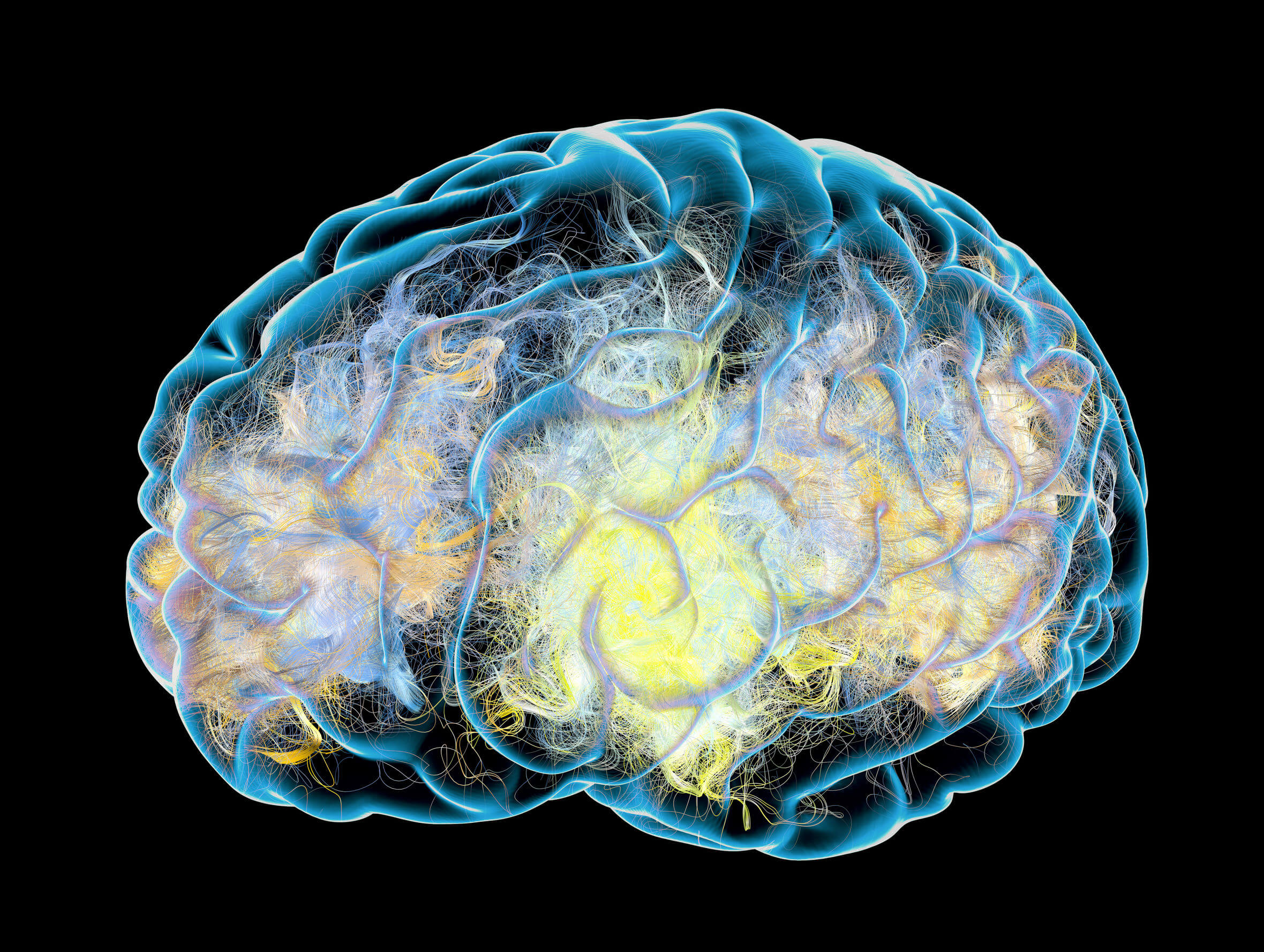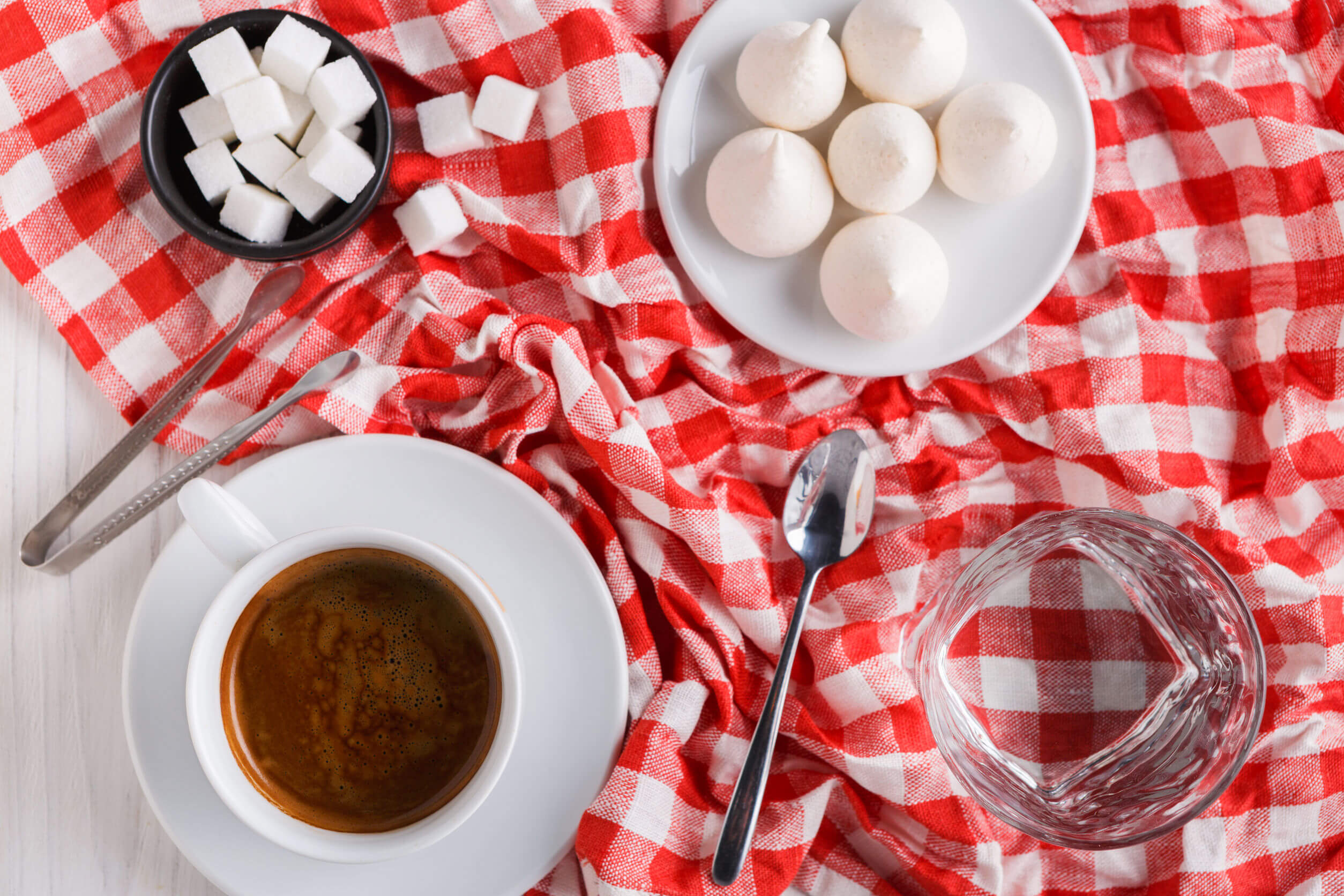7 Keys to Producing More Dopamine

Although it runs through the body naturally, there are some keys to producing more dopamine. This will improve brain processes related to your emotions, attention, motivation, and other feelings of well-being. In addition, it participates in functions such as motor behavior and neuroendocrine communication.
It’s synthesized through L-tyrosine, one of the 20 non-essential amino acids present in proteins, which helps to relieve stress, headaches, and muscle tension, among other things. According to various scientific articles , 5 types of dopamine receptors distributed in the central nervous system (CNS) have been identified.
Why is dopamine important?

As you can see, dopamine participates in vital processes related to the CNS (central nervous system). In addition to making you feel better during the execution of some tasks (which is why it’s commonly known as the happiness hormone), it intervenes in the proper functioning of the brain. This is why it’s so important to stimulate its production.
Dopamine and Parkinson’s
Studies have determined that there’s a close relationship between dopamine and Parkinson’s, a degenerative disorder of the CNS. According to scientific findings, this disease is caused by a reduction in dopaminergic neurotransmission in the basal ganglia.
This would be related to the death of more than 80% of the dopaminergic neurons present in the substantia nigra of the brain.
Dopamine and ADHD
Attention Deficit Hyperactivity Disorder (ADHD) is a neurodevelopmental problem that occurs frequently in childhood and usually lasts into adulthood. As its name implies, it is related to problems with maintaining attention and controlling impulsive behaviors.
Research has shown that there is a strong relationship between this disorder and a low level of dopamine. Specifically, there is a decrease in dopamine receptors in the brain and an alteration in its neurotransmission process.
The 7 keys to generating more dopamine
Now that you can see the importance of dopamine, beyond feelings such as happiness, it’s time to get to know the keys to produce more dopamine in the body:
1. Exercising
The feeling of well-being that’s experienced after reaching a goal goes beyond a feeling of well-being, it’s something that’s determined from a neurobiological point of view and acts as a reward system. Dopamine is involved in this process.
Taking into account that when you exercise, you plan to fulfill a routine or break a personal record (the goal). When you work to achieve it (the achievement) you experience the satisfying feeling of a goal having been accomplished.
In this case, the reward is having achieved what you wanted and its evidence in the muscle pain that’s typical of the physical activity carried out. At that moment, you are stimulating dopamine.
In addition, as scientific studies have proven, exercise stimulates the levels of different substances in the body, and one of them is dopamine. This may occur due to increased levels of acidity in the blood.
2. Practicing yoga
The practice of meditation techniques such as yoga produces an increase in dopamine and oxytocin, neurotransmitters that make us feel happy and relaxed. In addition, meditation helps us maintain the free and continuous flow of dopamine by sweeping away mental processes such as tension, fear or sadness.
In fact, studies on alternatives to treating ADHD have found yoga to be an excellent option. This takes into account that, as we said before, yoga increases dopamine levels, whose dysfunction would be the cause of this neurodevelopmental disorder.
3. Listening to music
Science has proven that music stimulates different brain processes. When you listen to your favorite song, you experience different sensations that are nothing more than a response to what is happening in your brain on a chemical level.
Among these sensations, you experience excitement, tachycardia, increased blood pressure, and even muscle tension. This is due to the increase in adrenaline. Added to that sensation is the pleasure you feel when listening to your favorite song, which is a more than a substantial increase in dopamine secretion.
So, when you feel stressed or sad, play your favorite song to stimulate dopamine production. In addition to feeling happy, it has the added bonus of helping you relax.
4. Make some to-do lists
This point has a lot to do with the reward process, the same one that functions in actions such as the practice of exercise. In the nucleus accumbens, we find a large number of neurons endowed with dopamine receptors, which are responsible for producing reward responses.
When the synapse is made to connect these neurons, the stimulus is released, increasing dopamine and generating pleasure. By making a list of tasks and crossing them off as you complete them, a large amount of dopamine is secreted. This discharge is interpreted by the body as a reward for the positive stimulus.
In addition to experiencing pleasure, the moment this happens, information is stored in the brain. We can remember this information later, and this constitutes the experience that we acquire as we repeat the actions.
5. Avoid consuming coffee or sugar

Studies have shown that both coffee and sugar are addictive substances. Although, in principle, its consumption stimulates the production of dopamine, in the long term it alters its neural circuits. This can cause addiction by disrupting the normal uptake of this neurotransmitter.
The same is true with drugs. When someone tries them for the first time, a significant dose of dopamine is released, which produces pleasure. This happens every time that substance is tested, because dopamine favors the repetition of behavior that it considers new and attractive.
Although food also produces pleasure, studies have indicated that the sensation disappears in subsequent tests, despite the fact that the food is still considered by the person to be delicious.
6. Eating healthy
As we mentioned before, eating gives us pleasure by releasing dopamine. However, you have to be careful, because there are some foods that can create addiction, such as sugar, coffee, tea, and chocolate, among others.
When you eat healthily and consume fruits such as watermelon, bananas, avocado, and blueberries, the secretion of this neurotransmitter is stimulated, as they’re rich in tyrosine. As we pointed out before, dopamine is synthesized from this amino acid.
Meat, fish, and eggs are also a good source of tyrosine, and for that reason, you should include them in your diet.
7. Stop stressing
Dopamine, along with other substances such as gamma-aminobutyric acid or GABA, acts as a stress controller. However, studies indicate that when stress levels are too high, a neurochemical imbalance occurs in these molecules.
Over time, this state could inhibit the release of dopamine, leading us to experience chronic sadness or depression. Because of this, you should learn to manage your stress levels better. Some meditation techniques like yoga can help you raise your dopamine levels.
Identify your own keys to generate more dopamine
We’ve given you 7 keys to producing more dopamine, but you may be able to find your own keys. As a bonus, you could try to be more charitable and grateful, as well as working as a team, as social rewards are produced through these actions. Learning new things also helps to produce more dopamine, as does stimulating your creativity. And, finally, one of the most effective ways is to fall in love, but who can plan that?!
Although it runs through the body naturally, there are some keys to producing more dopamine. This will improve brain processes related to your emotions, attention, motivation, and other feelings of well-being. In addition, it participates in functions such as motor behavior and neuroendocrine communication.
It’s synthesized through L-tyrosine, one of the 20 non-essential amino acids present in proteins, which helps to relieve stress, headaches, and muscle tension, among other things. According to various scientific articles , 5 types of dopamine receptors distributed in the central nervous system (CNS) have been identified.
Why is dopamine important?

As you can see, dopamine participates in vital processes related to the CNS (central nervous system). In addition to making you feel better during the execution of some tasks (which is why it’s commonly known as the happiness hormone), it intervenes in the proper functioning of the brain. This is why it’s so important to stimulate its production.
Dopamine and Parkinson’s
Studies have determined that there’s a close relationship between dopamine and Parkinson’s, a degenerative disorder of the CNS. According to scientific findings, this disease is caused by a reduction in dopaminergic neurotransmission in the basal ganglia.
This would be related to the death of more than 80% of the dopaminergic neurons present in the substantia nigra of the brain.
Dopamine and ADHD
Attention Deficit Hyperactivity Disorder (ADHD) is a neurodevelopmental problem that occurs frequently in childhood and usually lasts into adulthood. As its name implies, it is related to problems with maintaining attention and controlling impulsive behaviors.
Research has shown that there is a strong relationship between this disorder and a low level of dopamine. Specifically, there is a decrease in dopamine receptors in the brain and an alteration in its neurotransmission process.
The 7 keys to generating more dopamine
Now that you can see the importance of dopamine, beyond feelings such as happiness, it’s time to get to know the keys to produce more dopamine in the body:
1. Exercising
The feeling of well-being that’s experienced after reaching a goal goes beyond a feeling of well-being, it’s something that’s determined from a neurobiological point of view and acts as a reward system. Dopamine is involved in this process.
Taking into account that when you exercise, you plan to fulfill a routine or break a personal record (the goal). When you work to achieve it (the achievement) you experience the satisfying feeling of a goal having been accomplished.
In this case, the reward is having achieved what you wanted and its evidence in the muscle pain that’s typical of the physical activity carried out. At that moment, you are stimulating dopamine.
In addition, as scientific studies have proven, exercise stimulates the levels of different substances in the body, and one of them is dopamine. This may occur due to increased levels of acidity in the blood.
2. Practicing yoga
The practice of meditation techniques such as yoga produces an increase in dopamine and oxytocin, neurotransmitters that make us feel happy and relaxed. In addition, meditation helps us maintain the free and continuous flow of dopamine by sweeping away mental processes such as tension, fear or sadness.
In fact, studies on alternatives to treating ADHD have found yoga to be an excellent option. This takes into account that, as we said before, yoga increases dopamine levels, whose dysfunction would be the cause of this neurodevelopmental disorder.
3. Listening to music
Science has proven that music stimulates different brain processes. When you listen to your favorite song, you experience different sensations that are nothing more than a response to what is happening in your brain on a chemical level.
Among these sensations, you experience excitement, tachycardia, increased blood pressure, and even muscle tension. This is due to the increase in adrenaline. Added to that sensation is the pleasure you feel when listening to your favorite song, which is a more than a substantial increase in dopamine secretion.
So, when you feel stressed or sad, play your favorite song to stimulate dopamine production. In addition to feeling happy, it has the added bonus of helping you relax.
4. Make some to-do lists
This point has a lot to do with the reward process, the same one that functions in actions such as the practice of exercise. In the nucleus accumbens, we find a large number of neurons endowed with dopamine receptors, which are responsible for producing reward responses.
When the synapse is made to connect these neurons, the stimulus is released, increasing dopamine and generating pleasure. By making a list of tasks and crossing them off as you complete them, a large amount of dopamine is secreted. This discharge is interpreted by the body as a reward for the positive stimulus.
In addition to experiencing pleasure, the moment this happens, information is stored in the brain. We can remember this information later, and this constitutes the experience that we acquire as we repeat the actions.
5. Avoid consuming coffee or sugar

Studies have shown that both coffee and sugar are addictive substances. Although, in principle, its consumption stimulates the production of dopamine, in the long term it alters its neural circuits. This can cause addiction by disrupting the normal uptake of this neurotransmitter.
The same is true with drugs. When someone tries them for the first time, a significant dose of dopamine is released, which produces pleasure. This happens every time that substance is tested, because dopamine favors the repetition of behavior that it considers new and attractive.
Although food also produces pleasure, studies have indicated that the sensation disappears in subsequent tests, despite the fact that the food is still considered by the person to be delicious.
6. Eating healthy
As we mentioned before, eating gives us pleasure by releasing dopamine. However, you have to be careful, because there are some foods that can create addiction, such as sugar, coffee, tea, and chocolate, among others.
When you eat healthily and consume fruits such as watermelon, bananas, avocado, and blueberries, the secretion of this neurotransmitter is stimulated, as they’re rich in tyrosine. As we pointed out before, dopamine is synthesized from this amino acid.
Meat, fish, and eggs are also a good source of tyrosine, and for that reason, you should include them in your diet.
7. Stop stressing
Dopamine, along with other substances such as gamma-aminobutyric acid or GABA, acts as a stress controller. However, studies indicate that when stress levels are too high, a neurochemical imbalance occurs in these molecules.
Over time, this state could inhibit the release of dopamine, leading us to experience chronic sadness or depression. Because of this, you should learn to manage your stress levels better. Some meditation techniques like yoga can help you raise your dopamine levels.
Identify your own keys to generate more dopamine
We’ve given you 7 keys to producing more dopamine, but you may be able to find your own keys. As a bonus, you could try to be more charitable and grateful, as well as working as a team, as social rewards are produced through these actions. Learning new things also helps to produce more dopamine, as does stimulating your creativity. And, finally, one of the most effective ways is to fall in love, but who can plan that?!
- J. L. González de Rivera. Comunicación neuroendocrina, comportamiento y adaptación. Psiquis, 1980; 3: 57-58. Disponible en: https://luisderivera.com/wp-content/uploads/2012/02/1980-COMUNICACION-NEUROENDOCRINA-COMPORTAMIENTO-Y-ADAPTACION.pdf
- BAHENA-TRUJILLO, Ricardo; FLORES, Gonzalo; A ARIAS-MONTAÑO, José. Dopamina: síntesis, liberación y receptores en el Sistema Nervioso Central. REVISTA BIOMÉDICA, [S.l.], v. 11, n. 1, p. 39-60, ene. 2000. ISSN 2007-8447. Disponible en: <https://www.revistabiomedica.mx/index.php/revbiomed/article/view/218>. Fecha de acceso: 27 mar. 2021 doi:https://doi.org/10.32776/revbiomed.v11i1.218.
- Lilian María Vargas Barahona. Enfermedad de Parkinson y la Dopamina. BUN Synapsis Vol. 2 Abril – Junio 2007. Disponible en: http://www.bvs.hn/Honduras/SUN.THEPIXIE.NET/files/010460703.pdf
- ALEJANDRO VERA, MARIO IVÁN RUANO, LILIANA PATRICIA RAMÍREZ. Características clínicas y neurobiológicas del trastorno por déficit de la atención e hiperactividad. Colomb Med 2007; 38: 433-439. Disponible en: http://www.scielo.org.co/pdf/cm/v38n4/v38n4a14.pdf
- Acevedo-Triana César Andrés, Ávila-Campos Jorge Enrique, Cárdenas Luis Fernando. Efectos del ejercicio y la actividad motora sobre la estructura y función cerebral. Rev Mex Neuroci Enero-Febrero, 2014; 15(1): 36-53. Disponible en: https://www.medigraphic.com/pdfs/revmexneu/rmn-2014/rmn141f.pdf
- Osvaldo Fustinoni. La música: química, emoción y cerebro. Revista QuímicaViva ‐ Número 1, año 15, abril 2016. Disponible en: http://www.quimicaviva.qb.fcen.uba.ar/v15n1/fustinoni.pdf
- Pardo Lozano, Ricardo, & Alvarez García, Yolanda, & Barral Tafalla, Diego, & Farré Albaladejo, Magí (2007). Cafeína: un nutriente, un fármaco, o una droga de abuso. Adicciones, 19(3),225-238.[fecha de Consulta 27 de Marzo de 2021]. ISSN: 0214-4840. Disponible en: https://www.redalyc.org/articulo.oa?id=289122084002
- Rada, Pedro, & Avena, Nicole M., & Hoebel, Bartley G. (2005). “ADICCIÓN” AL AZÚCAR: ¿MITO Ó REALIDAD?. Revisión. Revista Venezolana de Endocrinología y Metabolismo, 3(2),2-12.[fecha de Consulta 27 de Marzo de 2021]. ISSN: 1690-3110. Disponible en: https://www.redalyc.org/articulo.oa?id=375540017002
- José Samuel Mucio-Ramírez. La neuroquímica del estrés y el papel de los péptidos opioides. REB 26(4): 121-128, 2007.
Este texto se ofrece únicamente con propósitos informativos y no reemplaza la consulta con un profesional. Ante dudas, consulta a tu especialista.







